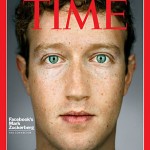As companies invest a greater portion of their branding budget in digital advertising, marketers are facing increased pressure to prove digital’s branding effectiveness both as a single channel and also in tandem with broader, traditional marketing channels. Many have quickly discovered that measuring a digital campaign’s success is no easy task.
“Digital’s legacy of direct-response metrics has caused many to fall back on measures that drove the first wave of online advertising—click through rate and page view,” said Lauren Fisher, EMarketer analyst and author of the new report, “Quantifying Digital Brand Ad Effectiveness: Finding the Right Mix of Meaningful Metrics.” But these metrics are both problematic and inaccurate for quantifying digital branding effects, especially considering internet users click on average less than 1% of display ads.
Others are attempting to roll digital measurement into the larger branding evaluation picture by importing traditional offline count metrics like the gross rating point (GRP). A December 2011 survey from DIGDAY and Vizu of North American marketers found this mixture was the most popular method for calculating online marketing ROI. One of the most basic and essential measures of digital branding impact is the traditional brand health survey, used to calculate brand lift. Four in five North American brand marketers considered brand lift to be the most important metric for evaluating the success of their online branding efforts, according to the survey.
Many marketers and industry leaders looking to leave behind the click through measure don’t have the option of using panel-based measures. As a result they are advocating for the adoption of the view through metric, which tries to measure not just whether an ad impression was served but whether it was actually viewed by an internet user. A similar, engagement-oriented metric for online video ads is completion rate.
Publishers like YouTube are already embracing this metric as a way for brands to both measure and pay for ad performance. It’s TrueView product allows advertisers to pay only for video ads that consumers have viewed for at least 30 seconds or to completion, depending on the length of the ad. According to video ad network Bright Roll, in Q1 2011 cost per video view was the metric upon which 21.2% of US ad agencies were most likely to base their online video ad spending. A slightly higher percentage preferred to base online video ad spending on the more general metric of cost per engagement (23.9%).
According to Lauren Fisher of EMarketer “Learning to effectively measure digital brand advertising takes time and practice,”. “Marketers must break old habits of using single measures of success—be it traditional count metrics such as the GRP or common digital measures such as click through or page view. Instead, they must look to uncover the right mix of traditional brand review metrics and appropriate digital measures of engagement.”







Connect With Us